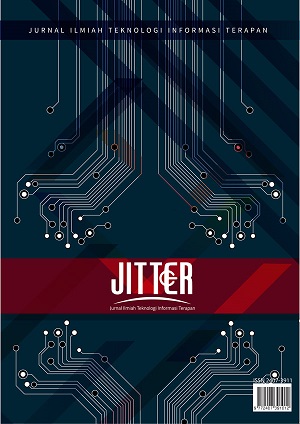IDENTIFIKASI BAHAYA DAN PENILAIAN RISIKO (IBPR) MENGGUNAKAN METODE HIRARC PADA PT XYZ
DOI:
https://doi.org/10.33197/jitter.vol9.iss2.2023.995Keywords:
Decreased Vision, Ergonomics, Computer Devices, Fire, HIRARC MethodAbstract
PT XYZ is engaged in information,
communication technology (ICT) and
telecommunication network services in Indonesia
which prioritizes Occupational Safety and Health
(K3). Especially in the Service and Administration
work units which have potential hazards such as
decreased vision, ergonomics, computer equipment
and fire, and Occupational Safety and Health (K3)
one form of effort to create a safe, healthy and
comfortable work environment can make work more
enjoyable productive, efficient and guarantee the
quality of work. Based on the research results, it is
necessary to carry out hazard identification and risk
research and control to prevent and reduce the
potential for work accidents. By conducting research
at PT XYZ in order to achieve the objectives of the
OHS program, namely Zero Accident in accordance
with the company's OHS procedures using the
HIRARC (Hazard Identification Risk Assessment and
Risk Control) method, it is a process of identifying
hazards (Hazard Identification) that can occur in all
activities carried out by the company where to
conduct risk research (Risk Assessment) and make
risk controls (Risk Control) in order to minimize the
level of accident risk. The potential reduction that can
occur also needs to be made after making risk
controls as well as a reference or target of the
controls applied and making suggestions to PT XYZ
company to prevent and control work accidents
Downloads
Downloads
Published
How to Cite
Issue
Section
License
Copyright (c) 2023 Cahaya Ramadhanti, Agata Rizki Rahmadani, Dwi Widya Dewanti

This work is licensed under a Creative Commons Attribution-NonCommercial-ShareAlike 4.0 International License.
Submission of a manuscript implies that the submitted work has not been published before (except as part of a thesis or report, or abstract); that it is not under consideration for publication elsewhere; that its publication has been approved by all co-authors. If and when the manuscript is accepted for publication, the author(s) still hold the copyright and retain publishing rights without restrictions. Authors or others are allowed to multiply the article as long as not for commercial purposes. For the new invention, authors are suggested to manage its patent before published. The license type is CC-BY-SA 4.0.




.png)
.png)













.png)


